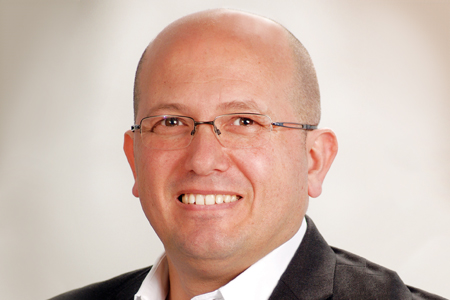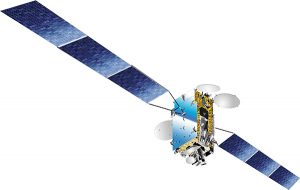Allocating C-band to the wireless industry in the US ? is it necessary, and will this decision impact other markets? Satellite operators, Intelsat, Measat, SES, Apstar and AsiaSat weigh in.

Allocating C-band to the wireless industry in the US ? is it necessary, and will this decision impact other markets? Satellite operators weigh in.
A recent proposal from the US Federal Communications Commission (FCC) aimed at giving the wireless industry access to C-band, which commercial satellite operators have long used to deliver cable and broadcast network programming, was received with mixed feelings. The proposal is said to have been initiated by Intel, Intelsat and SES. In July, Intelsat, SES and Eutelsat Allocating C-band to the wireless industry in the US ? is it necessary, and will this decision impact other markets? tackling c-band reallocation announced that they are aligned on the proposal to establish a commercial and technical framework to enable terrestrial mobile operators to quickly access spectrum in the 3,700-4,200MHz frequency band in the US, to expedite the deployment of nextgeneration 5G services. Vijaya Cherian spoke to stakeholders on both sides to hear their views on the recent ruling in the US and if it is likely to affect other markets that use C-band extensively.
Intelsat
For at least the past decade, Intelsat and other satellite operators have been defending C-band from encroachment by mobile network companies who want to take over that spectrum to expand their services. So, when we announced a collaborative proposal with Intel (later joined by fellow operators SES and Eutelsat) that clears some C-band spectrum in the US for use by wireless 5G providers, other satellite operators, particularly those outside the US, wondered if we had inexplicably switched teams mid-game.
Nothing could be further from the truth. Intelsat has not changed its view on the importance of protecting satellite operators? ability to deliver reliable, quality services to C-band customers. There is no room for compromise when it comes to the quality satellite transmissions needed by customers. We are the leading advocate that the services delivered in this band are crucial for media distribution and other essential data services in the US. We?ve successfully lobbied globally for C-band protection for over a decade.
The proactive stance of our US proposal was a direct response to an increasingly menacing regulatory landscape there. The MOBILENOW Act and AIRWAVES Act introduced by US legislators suggested complete reallocation of C-band services to wireless, or shared use with other unlicensed services. Additionally, public statements by FCC officials made it clear that the C-band environment will not remain the same.
When the FCC asked for recommendations from the industry on how C-band spectrum could be shared by the wireless community to accelerate the deployment of 5G in the US, we came forward with a proposal that preserves the satellite ecosystem in the band, while addressing the strategic objectives of the US government with respect to 5G leadership. With our proposal, satellite operators can continue to deliver the highest quality service to our media and telecommunications customers in the US.
However, we don?t think that the pressure on conventional C-band (3.7-4.2GHz) in other parts of the world is as intense as in the US, for two primary reasons:
- The US Table of Frequency Allocation differs from that elsewhere. The rest of the world has already identified the 3.4-3.6GHz band (and in some cases 3.4-3.7GHz) for mobile use. In contrast, 3.4- 3.7GHz in the US is allocated to federal use and to the new Citizens Broadband Radio Service.
t
In other words, the rest of the world has already made a significant amount of mid-band spectrum (200-300MHz) available for mobile use; this was not an option available to the FCC, so all eyes were on the conventional C-band.
- Many countries rely heavily on C-band infrastructure to support social and welfare programmes, and thus have a regulatory posture much more favourable to FSS. In much of Asia, South America and Africa, C-band is relied upon for a broad range of services, and the intensity of usage is arguably much greater than in the US. Rain patterns and other factors have resulted in significant deployments of C-band services for vital communications and video transmissions by national/government-affiliated organisations, as well as commercial satellite operators. Therefore, governments are unwilling to compromise their ability to deliver these fundamental services to citizens. This makes the situation much less conducive for reallocating conventional C-band to mobile in these regions.
t
But let?s not lose sight of the big prize: 5G promises to generate incredible growth in the economies where it is deployed, benefiting satellite every step of the way. The satellite industry, with ground and space assets that last decades, is defined by its ability to envisage the future. Throughout our history, the satellite industry has demonstrated time and again resilience, adaptability and flexibility. Our entry into the 5G era should be no exception.
Our US-focused proposal recognises that the fast-moving technology and regulatory landscape does not work well with one-size-fits-all solutions. It is tailored to the unique US environment and to respond to the US government?s strategic objectives of maintaining 5G leadership. Our proposal should be viewed solely through that lens.
Measat

Gradually, the satellite spectrum is being taken and reallocated to the mobile business. The issue with the FCC is that they want to allocate another 100MHz to mobile from the 3.7-3.8GHz band, and also have access to the entire C-band in the future. Satellite users of this band must migrate and move out to other bands.
We are gradually giving our spectrum away to mobile businesses. At the end of the WRC (World Radiocommunication Conference), while agreement has been obtained internationally, regulators can regulate for their respective countries without needing international recognition. Korea, Japan and other leading mobile countries are in favour of the C-band spectrum and they will purchase this band
Mobile operators have access to the 800-2,000MHz range and other spectrums as indicated in the Radio Regulations. The existing allocation of C-band to satellite usage should not be compromised, and vast numbers of users of C-band in Asia, Africa and South America with tremendous investment in the infrastructure should not be disturbed. Under agenda item 1.13 of WRC 19, mobile operators are requesting more than 30GHz allocations and even using up to about 80GHz frequencies. This means they do have the technology to operate at higher frequencies. So we do not know why they are clamouring to grab our satellite spectrums.
Europe and Africa have agreed to use 3.4-3.6GHz for mobile applications. Under the current ITU regulations, usage of the 3.4-3.7GHz band by certain countries in Region 3 of ITU (Asia and Asia Pacific) is subject to certain technical limitations and requires agreement from countries using these bands. Satellite operators should work together by lobbying through their administrations as well other organisations such as CASBAA and APSCC to protect the satellite C-band.
SES

Satellite C-band frequencies are critical for broadcast and data services and underpin the economy, society and security of many parts of the world. In Asia, billions of dollars have been invested by SES and other operators to develop C-band capacity; state-owned satellite operators have followed suit with significant C-band investments, and customers have spent millions on ground equipment. The result: a highly efficient, highly reliable ecosystem whose reach is unrivalled by any other technology.
Recently, the FCC indicated its intention to reallocate a portion of the standard C-band (3.7- 4.2GHz) for terrestrial 5G. This is driven largely by the fact that the US Table of Frequency Allocations is different from that of most of the rest of the world. While most of the world can use the 3.4- 3.6GHz band for terrestrial 5G, the US cannot because government radars operate in that band.
At CASBAA SIF 2018, some Asian satellite operators expressed concerns that other countries might follow the US approach. While we see some pressure to reallocate the standard C-band in other parts of the world, we do not think it necessary for other countries to follow the US, especially when the lower C-bands remain unassigned and could be readily available for terrestrial 5G. Policymakers in other countries must also fully consider the local context of C-band use in their country, including different market conditions, geography and weather.
Additionally, due to heavy rainfall in Asia, C-band is the most reliable communications option and is often used in vital government and back-up systems
AsiaSat

Numerous field tests and practical experience have demonstrated that it is not feasible for IMT and fixed satellite service (FSS) to coexist in the C-band downlink bands (3.4- 4.2GHz) within the same geographical area. C-band is used for a multitude of services in Asia and around the world. It provides basic lifeline connectivity to rural and remote areas, and plays an essential role in the socio-economic development of many developing countries. It is also used for mission-critical operations such as disaster recovery.
The C-band spectrum is crucial for backbone distribution of news, sports and entertainment. It is more resilient to rain fade and so is better able to offer reliable services to the rainy regions that contain the majority of people in the Asia Pacific region. Though an administration has the sovereign right to decide what service to deploy within its own territory, we call for proper consultation, planning and collaboration to protect the incumbent satellite operators, with mitigation measures including frequency selection and planning shielding both sides.
Nevertheless, we are of the opinion that alternate spectrum available, such as the millimeter wave (Mm wave) and extremely high frequency (EHF, mainly above 30GHz) bands offer much better opportunities to support the spectrum-hungry 5G mobile service for high data rate and lower latency applications. Performing the right consultation and developing 5G systems at the right spectrum range will facilitate the coexistence of mobile service with the existing satellite industry, and would be a win-win solution for all stakeholders.
Apstar

40% of our revenue comes from video. C-band is of paramount importance in Asia for video broadcasting and satellite communications, which are less affected by rain compared with other frequency bands. We currently operate many C-band satellite transponders. Indonesia has around 17,000 islands and they rely heavily on C-band even for 3G cellular backhaul.
The 3.4-3.6GHz frequency band (extended C-band) has been allocated to 5G in many regions, and 3.7- 4.2GHz (standard C-band) is allocated to fixed satellite services by ITU; however, according to the Intelsat/ Intel/SES C-band Spectrum Solution Proposal to the FCC, part of standard C-band should also be allocated to 5G in the US. This is a big concern and sets a bad example for those using C-band. This allocation will be a big blow for the broadcast industry.
As 5G and satellite services cannot coexist in this band, the implementation of 5G base stations will cause interference and wipe out satellite services. Intelsat, as an satellite industry leader, should not allow that. Standard C-band must continue to remain with satellite players. We have fought for so long to have it remain with us. Intelsat and SES control 90% of the C-band in the US and they are in favour of 5G and can influence international C-band allocation.












































































